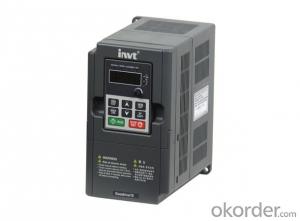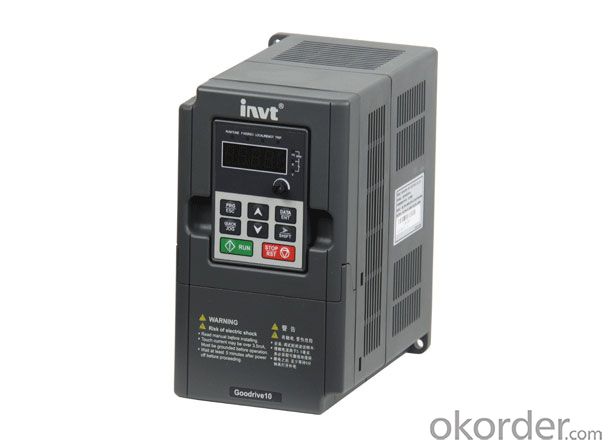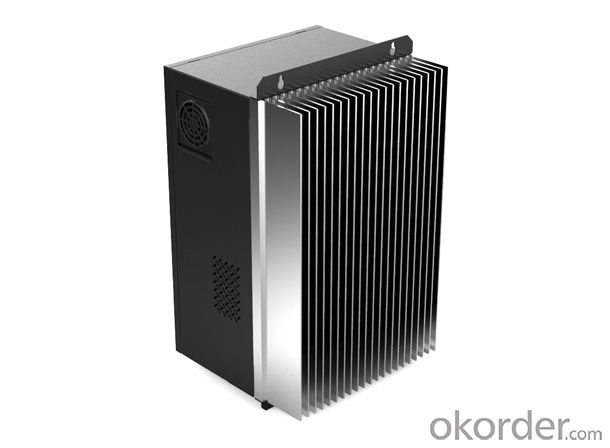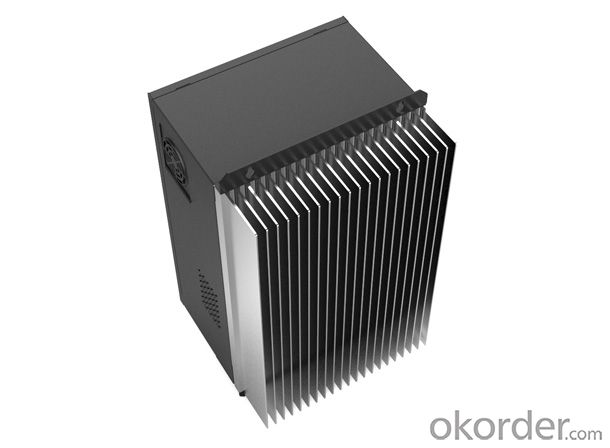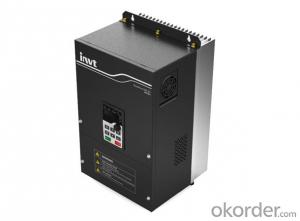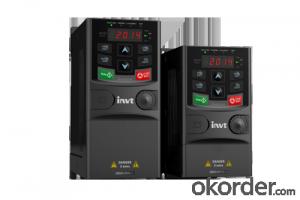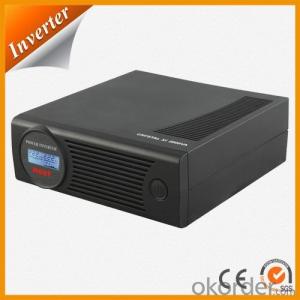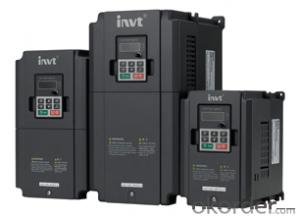Easy Solar Inverter - Goodrive10 Series Mini Inverter with Full Certification
- Loading Port:
- China main port
- Payment Terms:
- TT OR LC
- Min Order Qty:
- 100 pc
- Supply Capability:
- 10000 pc/month
OKorder Service Pledge
OKorder Financial Service
You Might Also Like
Goodrive10 Mini economic inverters are developed for general applications of small power and OEM market. It applies V/f control technology, making the functions of PID, multiple-speed step, DC braking, Modbus communication, as well as less installation space (15% smaller than the counterparts) available.
Goodrive10 Mini economic inverters are developed for general applications of small power and OEM market. It applies V/f control technology, making the functions of PID, multiple-speed step, DC braking, Modbus communication, as well as less installation space (15% smaller than the counterparts) available.
1AC 220V -15% ~ +10%, 0.2KW – 2.2KW
3AC 220V -15% ~ +10%, 0.2KW – 2.2KW
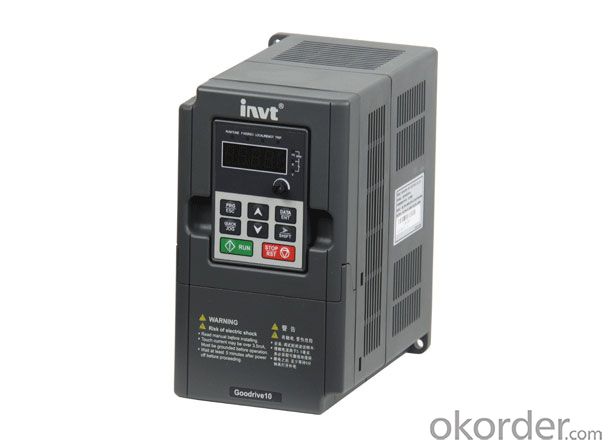
FAQ:
Q: Can you help us install the module if we cooperate with you?
A: We haven’t entered into installation sector, but we have the plan in near future.
Q: How do you pack your products?
A: We have rich experience on how to pack the panels to make sure the safety on shipment when it arrives at the destination.
Q: Can you do OEM for us?
A: Yes, we can.
Q: Can we visit your factory?
A: Surely, I will arrange the trip basing on your business schedule.
- Q: Can a solar inverter be used in a ground-mounted solar tracking system?
- Yes, a solar inverter can be used in a ground-mounted solar tracking system. The solar inverter is responsible for converting the direct current (DC) generated by the solar panels into alternating current (AC) that can be used to power electrical devices or be fed back into the grid. Whether the solar panels are fixed or mounted on a tracking system, the inverter's function remains the same.
- Q: Are there any safety concerns associated with solar inverters?
- Yes, there are some safety concerns associated with solar inverters. One of the primary concerns is the risk of electrical shocks or fires due to faulty installation or maintenance of the inverter. Additionally, some inverters may generate heat during operation, and if not properly ventilated, it can pose a fire hazard. It is crucial to follow proper installation guidelines, regularly maintain the inverter, and hire qualified professionals to minimize these safety risks.
- Q: Can a solar inverter be used with both AC and DC power sources?
- No, a solar inverter is designed to convert DC power from solar panels into AC power for use in standard electrical systems. It cannot be used with both AC and DC power sources simultaneously.
- Q: What is the maximum current output of a solar inverter?
- The maximum current output of a solar inverter depends on its size and specifications. In general, smaller residential inverters may have a maximum output current of around 8-12 amps, while larger commercial or utility-scale inverters can go up to several hundred amps. It is important to select an inverter that matches the specific requirements of the solar PV system to ensure optimal performance and safety.
- Q: Is it possible to upgrade my existing solar inverter without replacing the entire system?
- Yes, it is possible to upgrade an existing solar inverter without replacing the entire system. In many cases, solar inverters can be upgraded by simply replacing the existing inverter with a newer model that offers more advanced features or higher capacity. However, it is important to consult with a professional solar installer to determine the compatibility of the new inverter with your current system and ensure a successful upgrade.
- Q: Can a solar inverter be connected to a smartphone app for monitoring?
- Yes, a solar inverter can be connected to a smartphone app for monitoring. Many solar inverter manufacturers provide smartphone apps that allow users to monitor their solar energy production, track performance, and receive real-time updates on their system's performance. This integration enables users to conveniently monitor and manage their solar power system from their smartphones.
- Q: Can a solar inverter be used with solar-powered electric vehicle charging stations?
- Yes, a solar inverter can be used with solar-powered electric vehicle charging stations. A solar inverter is necessary to convert the DC (direct current) power generated by solar panels into AC (alternating current) power that can be used by electric vehicle charging stations. This allows the solar power to be fed into the charging station and used to charge electric vehicles.
- Q: Can a solar inverter be used with a smart home system?
- Yes, a solar inverter can be used with a smart home system. In fact, integrating a solar inverter with a smart home system allows for better monitoring, control, and optimization of the solar energy production and consumption in the home. This integration enables homeowners to track their energy usage, maximize self-consumption, and even automate certain appliances or systems based on the availability of solar power.
- Q: What are the advantages of using a solar inverter with battery storage?
- The advantages of using a solar inverter with battery storage include: 1. Energy independence: With a solar inverter and battery storage system, you can generate, store, and use your own electricity, reducing your reliance on the grid and ensuring a continuous power supply even during grid outages. 2. Increased self-consumption: The battery storage allows you to store excess solar energy generated during the day for use at night or during cloudy days, maximizing self-consumption and reducing the need to purchase electricity from the grid. 3. Time-of-use optimization: By storing excess solar energy and using it during peak demand periods, you can take advantage of time-of-use pricing, where electricity rates are higher during peak times. This can help you save money on your electricity bills. 4. Backup power: During power outages, the battery storage system can provide backup power, ensuring that critical appliances or equipment continue to function. This is particularly beneficial for homes or businesses that require uninterrupted power supply. 5. Environmental benefits: Solar energy is a clean and renewable source of energy. By using a solar inverter with battery storage, you can reduce your carbon footprint and contribute to a greener future by minimizing reliance on fossil fuels. 6. Grid support and stability: Battery storage systems can also provide grid support services, such as frequency regulation and peak shaving. This helps to stabilize the grid and improve overall energy efficiency. Overall, using a solar inverter with battery storage offers numerous advantages, including energy independence, cost savings, environmental benefits, and improved reliability of power supply.
- Q: Can a solar inverter be used with a solar-powered water desalination system?
- Yes, a solar inverter can be used with a solar-powered water desalination system. A solar inverter is responsible for converting the direct current (DC) generated by solar panels into alternating current (AC) that can be used to power various electrical devices, including a water desalination system. By connecting the solar panels to the solar inverter and then to the water desalination system, the renewable energy produced by the sun can be harnessed and utilized efficiently for the desalination process.
Send your message to us
Easy Solar Inverter - Goodrive10 Series Mini Inverter with Full Certification
- Loading Port:
- China main port
- Payment Terms:
- TT OR LC
- Min Order Qty:
- 100 pc
- Supply Capability:
- 10000 pc/month
OKorder Service Pledge
OKorder Financial Service
Similar products
Hot products
Hot Searches
Related keywords
